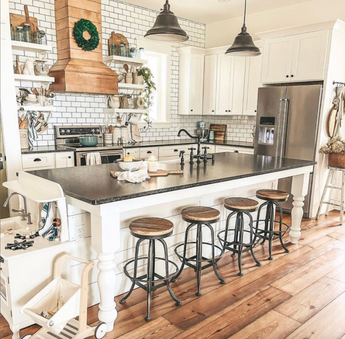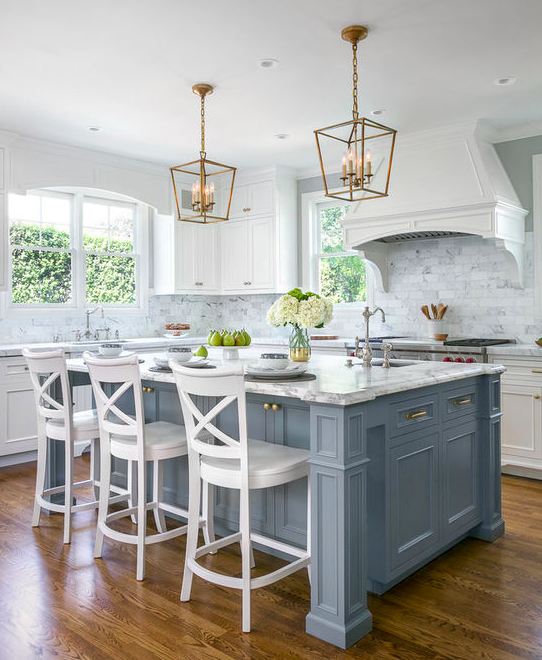Change Your Area with Ingenious Kitchen Island Leg Designs
Change Your Area with Ingenious Kitchen Island Leg Designs
Blog Article
Discovering the Essential Attributes of a Kitchen Island Leg for Your Culinary Area
The cooking area island serves as a main hub in any culinary room, and the option of leg style is essential in improving both its functionality and visual charm. Comprehending the essential functions of kitchen area island legs-- including material options, style styles, and stability variables-- can considerably impact the total experience within the kitchen.
Relevance of Kitchen Area Island Legs
Kitchen area island legs play an important duty in both the performance and looks of a kitchen room. They not just support the weight of the island however also enhance the general layout, contributing to the kitchen area's aesthetic allure. The selection of legs can determine the design of the kitchen area, be it contemporary, typical, or rustic.
Functionally, robust and properly made legs make sure stability, permitting the safe use of the island for various jobs such as cooking, eating, or enjoyable. Strong legs avoid moving and tottering, providing a trusted surface area for day-to-day tasks.
Additionally, the height and positioning of the legs can influence the comfort degree for those seated at the island. A well-considered height can accommodate bar feceses or chairs, advertising a welcoming environment for events.
Along with these sensible considerations, kitchen area island legs can act as a centerpiece in the space (kitchen island leg). Attractive or distinctively created legs can boost the design aesthetic, making the island a centerpiece. Thus, selecting the right kitchen island legs is crucial for balancing kind and function in any type of cooking room
Material Options for Legs
Choosing the appropriate material for kitchen island legs dramatically influences both resilience and style. Common material options include rock, metal, and timber, each offering distinctive benefits.
Wood is a popular choice because of its heat and adaptability. It can be conveniently tailored to match numerous decor styles, from rustic to modern. Hardwoods like oak and maple give outstanding strength and longevity, while softer timbers can be a lot more vulnerable to tear and put on.
Metal legs are favored for their smooth, contemporary visual. kitchen island leg. Stainless-steel and aluminum are not only robust however additionally resistant to corrosion and rust, making them perfect for cooking area settings. They can develop an industrial appearance and are usually readily available in numerous coatings to enhance other kitchen components
Rock legs, such as granite or marble, include an aspect of luxury and stability. While much heavier than other products, they supply extraordinary resilience and can stand up to significant weight. They might call for additional assistance to make certain proper balance.
Ultimately, the choice of product ought to line up with both useful demands and the overall style vision of the cooking area area, guaranteeing that the island legs enhance both energy and appearances.
Layout Styles to Think About
What style styles should be considered when selecting legs for a kitchen island? The choice of leg style considerably affects the general visual of your cooking room. For a modern kitchen area, streamlined and minimalistic leg layouts, such as stainless steel or geometric forms, can enhance the contemporary charm, giving a tidy and clean appearance.
In comparison, standard kitchen areas gain from traditional designs such as transformed or carved wooden legs, which include warmth and character. These choices commonly feature detailed details that match vintage home furnishings. For a rustic ambiance, think about legs made from reclaimed wood or wrought iron, which bring a natural, natural top quality to the area.
If you lean towards a commercial motif, durable metal legs with a troubled finish might be excellent, offering an edgy yet innovative touch. In addition, farmhouse style kitchen special info areas can incorporate beefy legs that look these up stimulate a sense of toughness and homeliness.

Elevation and Stability Factors
The elevation and stability of a kitchen island are crucial components that straight influence its performance and individual experience. An optimal kitchen area island leg should offer adequate height to suit a selection of jobs, from cooking to casual eating. Normally, cooking area islands separate 36 to 42 inches tall, straightening with standard counter and bar heights. This array ensures comfort for customers while executing numerous activities, thus improving the general use of the room.
Stability is just as vital, specifically as cooking area islands frequently act as focal factors in culinary atmospheres. A secure leg design decreases tottering and shifting, which can cause mishaps or pain throughout usage. Products such as solid timber, steel, or a combination thereof are typically utilized to achieve the required sturdiness. Furthermore, the leg's attachment to the island's base need to be index safe, making certain durability and strength versus the damage of everyday use.
Customization and Accessories
Customization choices and devices for kitchen area island legs can significantly improve both the aesthetic charm and performance of the space. Home owners can select from a selection of materials, consisting of stone, steel, and wood, enabling for seamless combination with existing kitchen decor. The option of coating-- be it an all-natural stain, repaint, or powder finishing-- further individualizes the appearance, making certain that the island complements the general style theme.
Along with product and surface, property owners may also check out the unification of accessories such as attractive brackets, adjustable feet, or incorporated shelving. Brackets can provide added assistance while adding to a contemporary or rustic visual. Adjustable feet are specifically helpful for uneven flooring, guaranteeing the island remains secure and level, which is essential for both safety and security and functionality.

Verdict
Finally, kitchen area island legs offer an essential role in offering security and improving the overall aesthetic of the cooking room. The selection of materials and style styles adds to both capability and aesthetic allure, while factors to consider of elevation and security make sure useful use. In addition, personalization choices and accessories can boost the cooking area island, making it an unique prime focus within the home. Thus, careful factor to consider of these attributes is crucial for a reliable kitchen area layout.
The cooking area island offers as a central center in any type of cooking room, and the selection of leg design is crucial in improving both its performance and visual appeal. Comprehending the essential functions of kitchen area island legs-- consisting of material options, style styles, and security factors-- can significantly influence the general experience within the kitchen.Cooking area island legs play an essential duty in both the functionality and appearances of a kitchen space.What design styles should be taken into consideration when picking legs for a kitchen island?In final thought, kitchen area island legs serve a critical duty in providing security and enhancing the overall visual of the culinary room.
Report this page